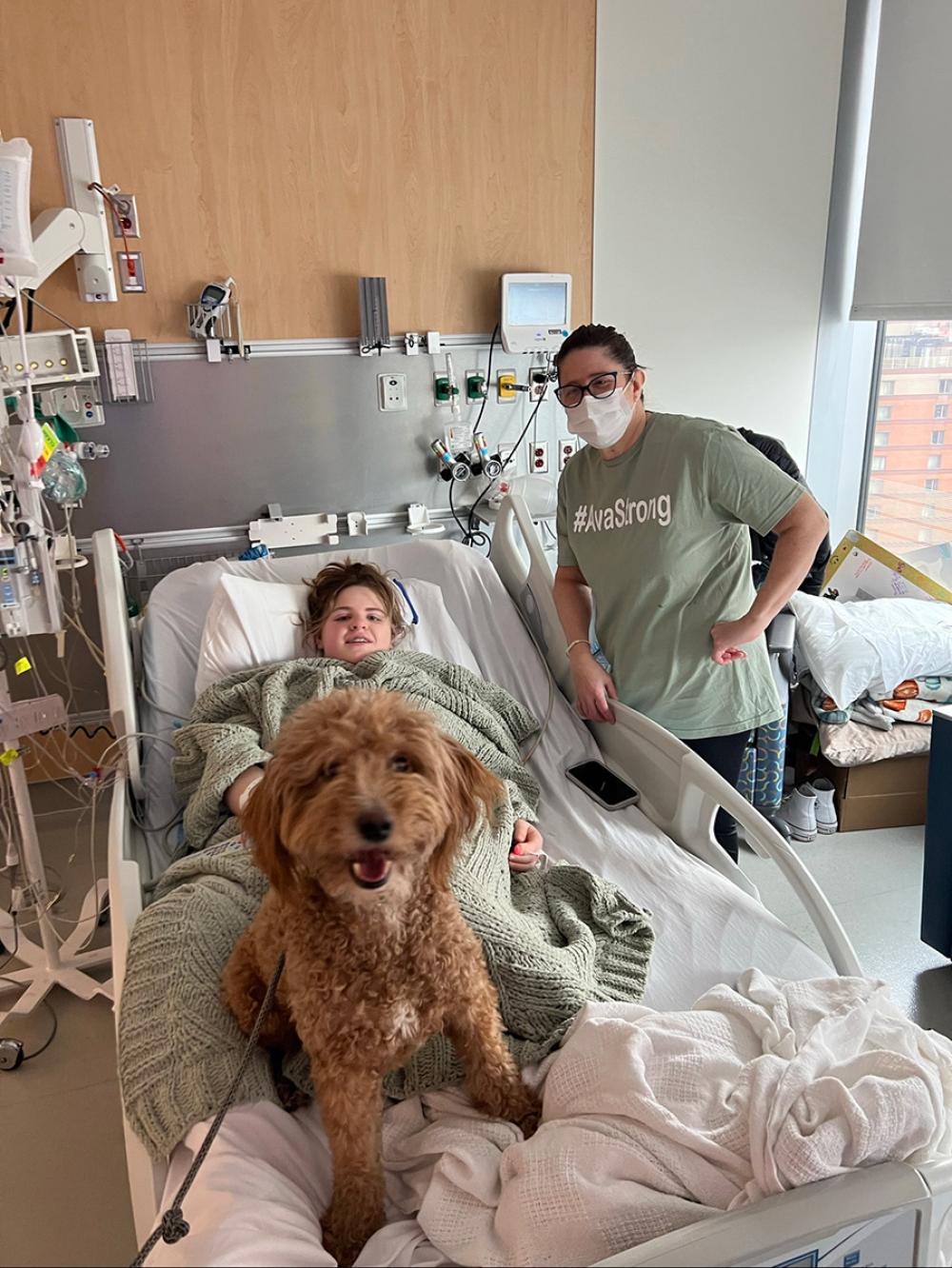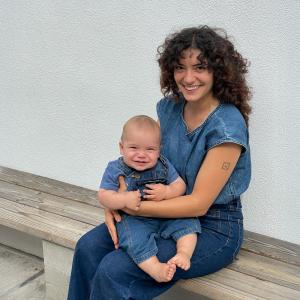
Specialists at Hassenfeld Children’s Hospital at NYU Langone used a unique approach to treat Ava Romano’s pulmonary embolism when she was 15.
Photo: Mile Djordijiovski/NJ Advance Media
Ava Romano was just like any other 15-year-old. She looked forward to going to school, hanging out with friends, and playing softball. When the New Jersey teen started feeling chest pain in early January, her parents, Michele and Joe, took her to a local cardiologist, who gave Ava a portable electrocardiogram that continuously monitored her heart rate. But only a few weeks later, Ava suddenly passed out at home and was rushed to a nearby emergency department, discovering it was not a heart condition, but severe blood clots in her lungs.
Diagnosed with a pulmonary embolism (PE)—a blockage in the blood vessels going from the heart to the lungs caused by the blood clots—Ava struggled to breathe and was immediately put on ECMO, or extracorporeal membrane oxygenation, a treatment that takes over the work of the heart and lungs, effectively saving her life. However, given the complexity of Ava’s condition, she needed highly specialized pediatric medical and surgical care and was swiftly transferred to Hassenfeld Children’s Hospital at NYU Langone, a move made possible through the tremendous efforts of the Pediatric and Neonatal Transport Program.
Specialists from the Pediatric ECMO Program, including Arun Chopra, MD, medical director, and Jason C. Fisher, MD, surgical director, traveled to New Jersey, secured Ava on a mobile ECMO machine, and brought her by ambulance to Hassenfeld Children’s Hospital and into the Pediatric Intensive Care Unit.
“Upon arrival, our team discussed a plan to remove the blood clots with experts in pediatric cardiothoracic surgery and pediatric interventional radiology,” said Dr. Fisher, who is also director of children’s surgical services at Hassenfeld Children’s Hospital. “We decided on a minimally invasive, catheter-based technique given the intricacy of the situation, with an approach that has not been used on a patient this young before.”
PE in children and adolescents is relatively rare as compared to adults. However, more pediatric blood clots are found today because more healthcare providers are looking for them and improved imaging equipment lets them be more easily identified.
Risk factors for PE in teens include a recent surgery, orthopedic injury, certain medications, or a family history of blood-clotting disorders. In this case, Ava’s dad, Joe, had had blood clotting two years prior, but it had not been as severe as Ava’s diagnosis.
A Unique and Rare Approach to Treating Pulmonary Embolism in Children
The initiation of ECMO at the previous hospital required several attempts and damaged some blood vessels in Ava’s groin, which is not uncommon when this technique is done in an emergency, and she was bleeding severely. Because of this, the care team couldn’t use the standard approach to dissolve the blood clots by administering medication, known as catheter-directed thrombolysis, as it would only prolong or worsen Ava’s bleeding.
Frederic J. Bertino, MD, director of Pediatric Interventional Radiology at Hassenfeld Children’s Hospital, decided on a novel, minimally invasive approach to successfully remove the blood clots in Ava’s pulmonary vessels. The procedure, known as mechanical thrombectomy, entails guiding a slightly larger catheter—a flexible, thin tube—through a small incision in Ava’s neck into the artery in the lungs. The catheter is then positioned next to the blood clots, allowing Dr. Bertino to break up and suck out the clots completely from her lungs.
“This is a relatively new and very niche area for treating blood clots, especially in someone of this age,” said Dr. Bertino, one of the very few experts in the country able to perform this technique. “Offering this level of care to the youngest patients should be done in a center that has experience and can deploy treatment rapidly.”
An extensive team of pediatric surgeons, adult vascular surgeons, pediatric intensive care specialists, wound care physicians, anesthesiologists, nurses, and respiratory therapists worked around the clock to treat Ava. By the next day, she was ready to come off the ECMO machine, but the severe bleeding in her groin persisted.
“While ECMO was used as a rescue therapy to allow time for Dr. Bertino to perform a thrombectomy, the ECMO cannulation, the process of inserting tubes into the blood vessels in the groin to support her heart and lungs, was very complicated, which resulted in significant bleeding,” said Katherine Teter, MD, vascular surgeon and clinical assistant professor in the Department of Surgery at NYU Langone.
Dr. Teter and one of her partners, vascular surgeon Joanelle Z. Lugo, MD, worked together with the pediatric team to repair the injured vessels and remove the ECMO catheters.
“After almost two weeks in the hospital, being on ECMO and the ventilator, pulmonary embolisms, thrombectomy, bleeding out from the arteries, vascular surgery, right-side heart damage, multiple blood transfusions, and spiking fevers of 104.9, our little Miracle on East 34th Street is HOME!” said mom Michele when Ava was able to leave the hospital on February 5.
Getting Back on the Softball Field
Ava celebrated her 16th birthday on March 27. The Romanos say it was a tough and bittersweet day.
“When we brought out the cake, we all cried realizing how lucky we were to be celebrating with Ava. We almost lost her,” said Michele. “I am in awe of the team at NYU Langone, the compassion and care for Ava and us every step of the way was unmatched.”
Ava’s birthday wish was to become strong enough to get back to playing softball with her high school team. Sure enough, just five months later, Ava has returned to the field with her teammates to play one last game before the season ends.
She continues to have regular visits with Gabriel A. Robbins, MD, pediatric hematologist–oncologist and medical director of the Stephen D. Hassenfeld Children’s Center for Cancer and Blood Disorders, part of Hassenfeld Children’s Hospital, to monitor and create a care plan that lowers the risk of having another clot.
“PE often goes unrecognized among children,” said Dr. Robbins. “Because there are so many other causes of chest pain, and because PE is rare in pediatric patients, it is important for families to alert healthcare providers if their child or teenager is experiencing possible symptoms of PE and has a risk factor for blood clots.”
Read more from NJ.com (subscription required).


